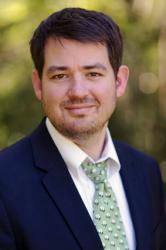2011 kicked off the 150th anniversary of the American Civil War. At the beginning of 2011, I began seeing articles and news clippings to commemorate the anniversary. While not a professional historian, I took classes on the conflict at Ole Miss and visited memorials and battlefields on my own time. I must give recognition to Dr. James Cooke, emeritus professor of history at the University of Mississippi, for his brilliant and passionate lectures that awakened a greater interest in the subject for me. After reading a lot of anniversary coverage, I noticed unsurprisingly, the topic of faith was neglected.
I thought it would be a good idea to feature a few articles on the Civil War in Religion & Liberty. I asked Mark Summers, a historian from Virginia to pen something on the topic. I have known Summers for over a decade and I knew that he understood the Acton Institute and Religion & Liberty enough to deliver. He is a first class historian and the ideas for the articles were entirely his own.
The first piece, “The Great Harvest: Revival in the Confederate Army during the Civil War” is a fascinating look at the evangelical revivals that spread through the Confederate ranks. The revivals, and of course the war itself, definitely played a significant role in shaping today’s strong religious vibe in the American South. Summers says himself in the piece,
Prior to the American Revolution, New England had been the “Bible Belt” of America, while church attendance in the South was scant. The Second Great Awakening shifted the culture of Dixie, and America as a whole. The revivals took hold in the “backcountry” amongst the yeoman. Southern evangelism reflected the charismatic and independent character of the Appalachian farmers. Southern yeomen declared their independence from the staid faith of the plantation gentry. While planters dominated politics and business, humbler folk shaped the culture of Southern Sundays.
Summers wrote about the Catholic Church and Catholic soldiers in the Fall 2011 R&L. He primarily focused on Catholics in the North and how the Church was unique from American Protestantism with its ability to stay unified despite the horrific conflict. Those who have studied American Protestant history are well aware that many denominations split along sectional lines and many of the divisions we have today resulted or were exacerbated by the Civil War. Summers notes,
Indeed, it was this unity of the Catholic Church which proved unique among American Christianity. While Protestant denominations split over theological and sectional lines, the Catholic Church stood as the only major church which remained united during the war, even if its congregants fought on opposite sides.
These two articles tell powerful stories about faith in this country during its bloodiest, most heartbreaking period. The country had never seen or experienced such a massive slaughter of life. The pieces authored by Summers tell a story about our own American history but they also tell the story that points to the ancient truth, and that is that God is at work redeeming that which is separated, broken, and in despair. In the words of Isaiah:
Arise, shine, for your light has come, and the glory of the LORD rises upon you. See, darkness covers the earth and thick darkness is over the peoples, but the LORD rises upon you and his glory appears over you. Nations will come to your light, and kings to the brightness of your dawn. (Isaiah 60:1-3)

